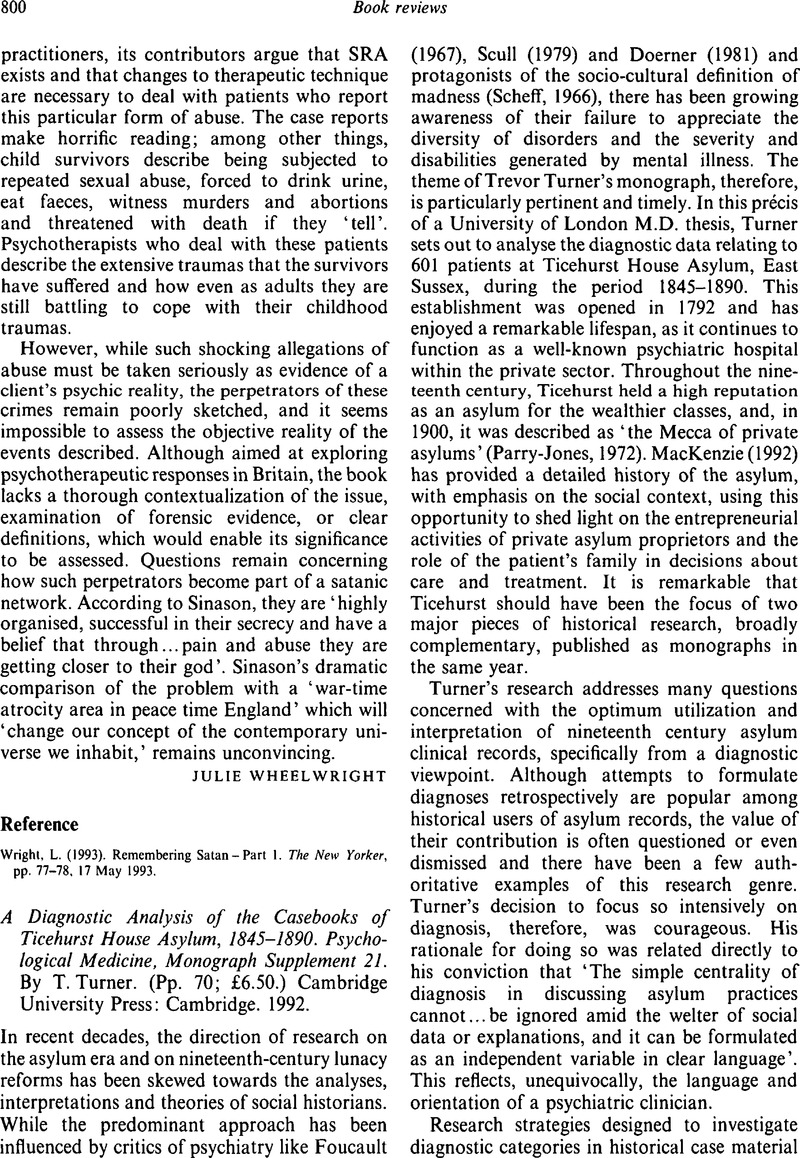No CrossRef data available.
Article contents
A Diagnostic Analysis of the Casebooks of Ticehurst House Asylum, 1845–1890. Psychological Medicine, Monograph Supplement 21. By T. Turner. (Pp. 70; £6.50.) Cambridge University Press: Cambridge. 1992.
Published online by Cambridge University Press: 09 July 2009
Abstract
An abstract is not available for this content so a preview has been provided. Please use the Get access link above for information on how to access this content.

- Type
- Book Reviews
- Information
- Copyright
- Copyright © Cambridge University Press 1994
References
Beer, M. D. (1993). History of the psychiatric profession and its institutions. Current Opinion in Psychiatry 6, 694–697.CrossRefGoogle Scholar
Doerner, K. (1981). Madness and the Bourgeoisie: A Social History of Insanity and Psychiatry. Basil Blackwell: Oxford.Google Scholar
Etzioni, A. (1975). Deinstitutionalization: the latest public policy fashion. Human Behaviour (09), 12–13.Google Scholar
Foucault, M. (1967). Madness and Civilization: A History of Insanity in the Age of Reason. Tavistock: London.Google Scholar
MacKenzie, C. (1992). Psychiatry for the Rich. A History of Ticehurst Private Asylum, 1792–1917. Routledge: London.Google Scholar
Parry-Jones, W. Ll. (1972). The Trade in Lunacy. A Study of Private Madhouses in England in the Eighteenth and Nineteenth Centuries. Routledge and Kegan Paul: London.Google Scholar
Parry-Jones, W. Ll. (1988). Asylum for the mentally ill in historical perspective. Psychiatric Bulletin of the Royal College of Psychiatrists 12, 407–410.CrossRefGoogle Scholar
Scull, A. (1979). Museums of Madness: The Social Organisation of Insanity in Nineteenth-Century England. Allen Lane: London.Google Scholar




